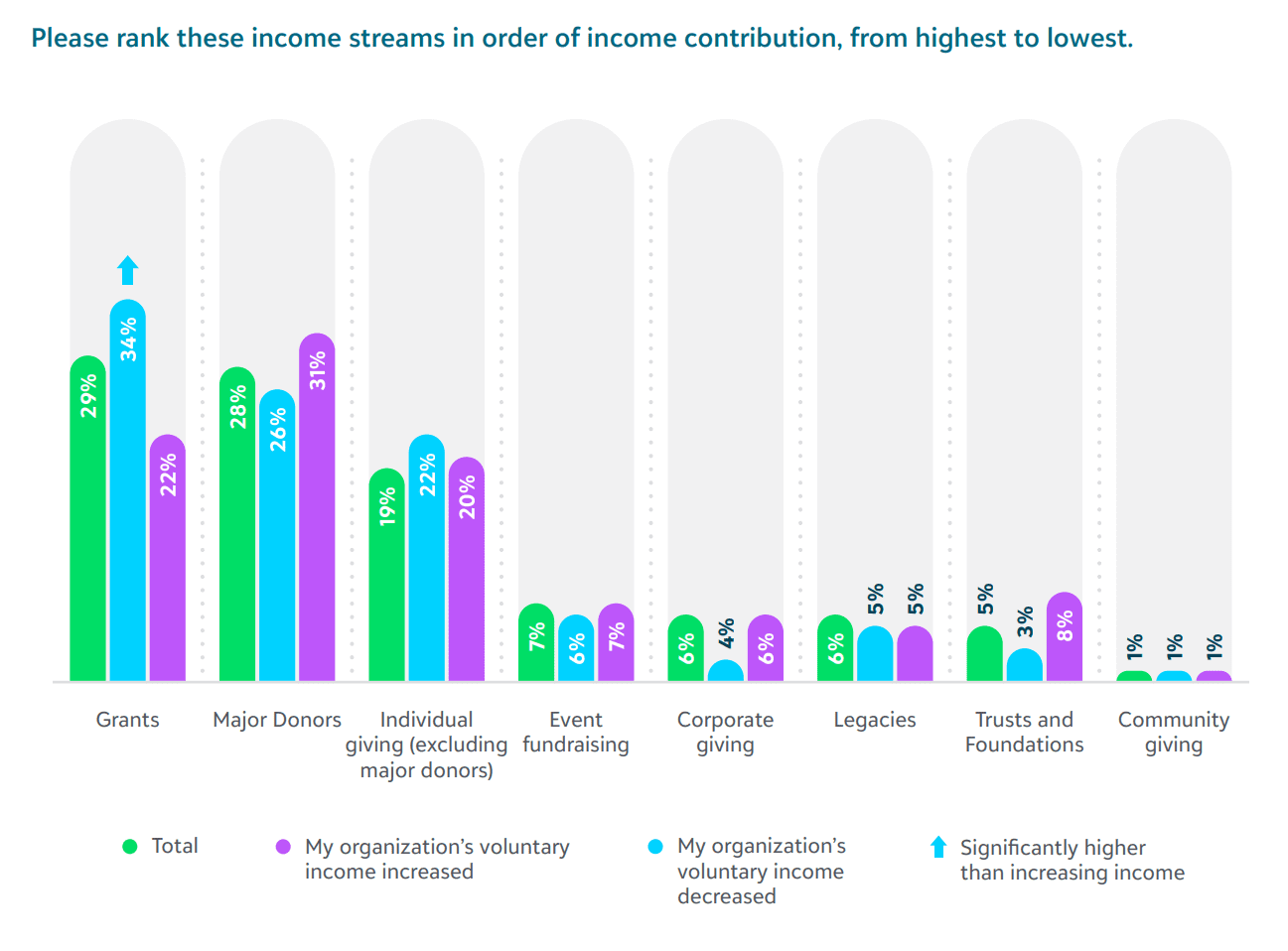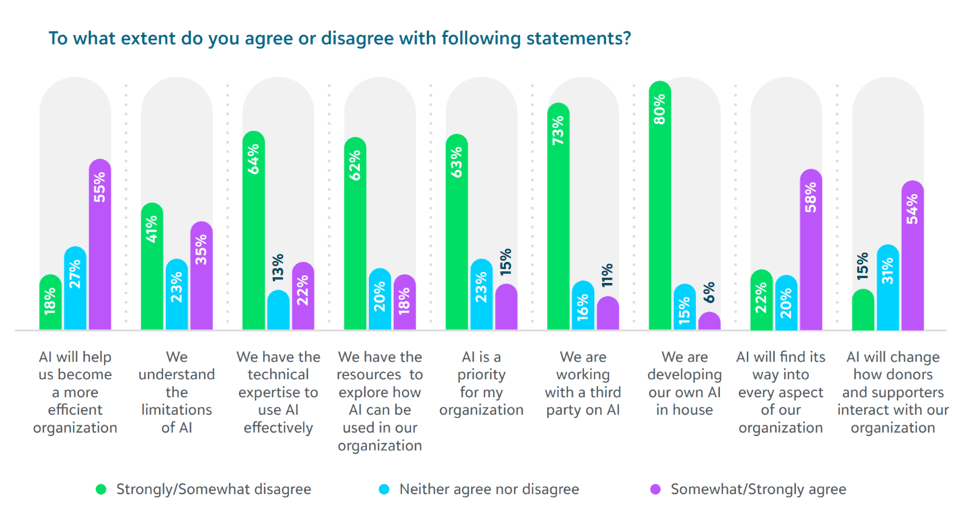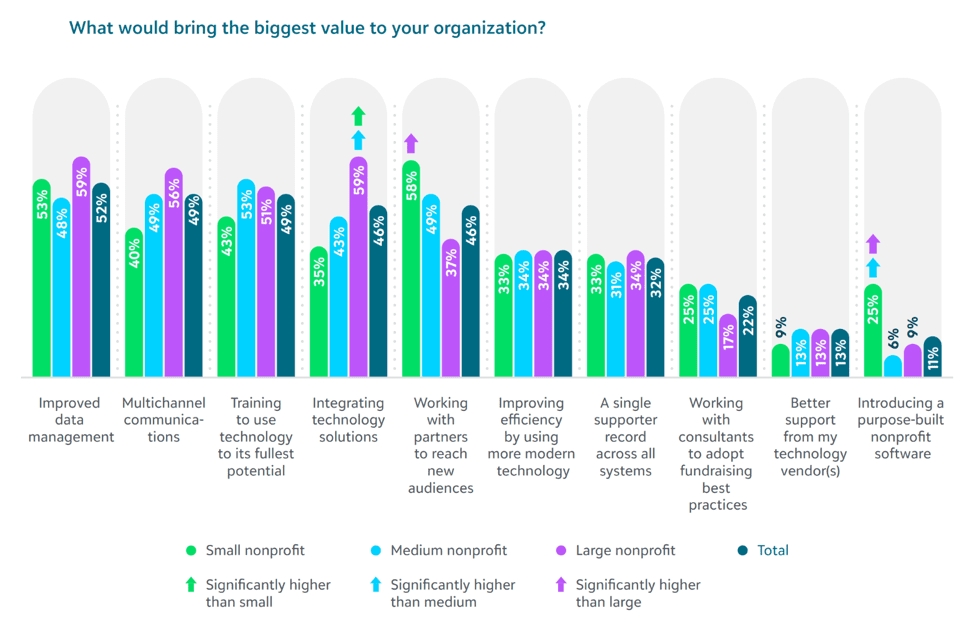AI, Income Performance, and Innovation: Key Fundraising Trends in 2024
This blog was contributed by Blackbaud as part of an ongoing partnership with ONN.
Amid ongoing economic uncertainties and the global pandemic aftermath, nonprofits have had to navigate a lot of change in recent years—shaping the global nonprofit space towards digital-first experiences and processes. What’s more, modern innovations are making their way into the nonprofit sector, further changing the needs and expectations of prospects, donors, and stakeholders.
We conducted our annual Status of Canadian Fundraising research, and in this article, we share a glimpse of what 550+ participants in Canada told us about their recent performance, current fundraising strategies and opportunities, use of technology and CRMs, and attitudes towards artificial intelligence (AI).
Nonprofit income trends positively despite a challenging economic backdrop
Most research participants reported either a stable or increased income when asked to share about their income changes in the last full financial year.
However, it’s evident that the economic situation—and subsequent fewer donations—challenge nonprofit organizations. At 59%, the wider economic environment was ranked as the main reason behind income decline.
When focused on income streams, grants are ranked as the main income stream in Canada. However, there are key differences between organizations growing and declining in income. Nonprofits reporting an income decrease are significantly more reliant on grants. In comparison, growing nonprofits get most of their income from major donors.

Digital maturity can enhance performance significantly
A digitally mature nonprofit is one where digital is integrated across all areas, including fundraising, supporter experience, internal processes, and more.
We asked participants to place their nonprofit on a digital maturity spectrum, ranging from 1 (lowest) to 10 (highest). Based on the data, we could identify an average industry digital maturity score of 5.5.
The research shows an interesting link between digital maturity and income performance. Those with below-average digital maturity scores are significantly more likely to say their income is declining. These findings suggest that tech-savvy nonprofits are often better able to capitalize on opportunities that help them grow.
AI intrigues the nonprofit sector, but many wish they had more resources or knowledge to explore fundraising use cases
Artificial intelligence has taken the world by storm, and the Canadian nonprofit sector is no exception. 67% of participants shared that they use AI.
While predictive and generative AI are the two types of artificial intelligence most relevant in fundraising, the research reveals that nonprofits globally are mainly using generative AI – only 10% shared that they are currently using predictive AI.
While attitudes are mostly positive, most participants also have concerns about the technology. They are especially concerned about misinformation, data security, and bias. “I think there is definitely potential for the tools. I think there needs to be clearer guidelines and more discussion on the ethical implications,” said one research participant.
Despite these concerns, at 5%, only a few say that their nonprofit has an AI policy in place. Considering the speed of AI adoption, it is vital that nonprofit-wide policy making is accelerated, especially when most participants say they, in fact, already use AI.

Integrated technology ecosystems are a rare thing in the sector—but CRMs are seen as an important value opportunity
As a social impact software provider, we were also keen to find out more about participants’ CRMs and technology ecosystems. Most use a CRM solution, and many see it as a valuable tool for improving performance and building stronger relationships. However, just a small minority say that they get the most out of their CRM system.

There are big differences when looking into these results based on how digitally mature the respondent says their organization is. Those digitally mature are much more likely to agree that their software improves overall performance, and they use it more effectively to build stronger relationships.
Many participants shared that they would appreciate more comprehensive training and better understanding of how to tailor their solution to the organization’s unique needs. CRM-related costs are also a key consideration when it comes to satisfaction. Despite these struggles, the vast majority are satisfied with their solution.
We also asked participants to share what would bring most value to their current fundraising strategies. While improved data management was ranked as the biggest value opportunity, larger organizations also highlighted integrations as an important value opportunity.
These research findings on integrations are not surprising—just 8% share that their fundraising technology is well integrated. Most organizations have some integrations in place, and payment processing, donation forms, and email marketing are the most common integrations.

Organizations now have the opportunity to drive even further impact by fully realizing the potential of their software through training, integrations, and relationships with vendors and partners. Intentional strategies for building a culture around innovation and digital adoption can help nonprofits of all sizes drive growth and enhance the impact of their mission.
Download the Status of Canadian Fundraising 2024 Report to explore more industry trends and benchmark your performance.






